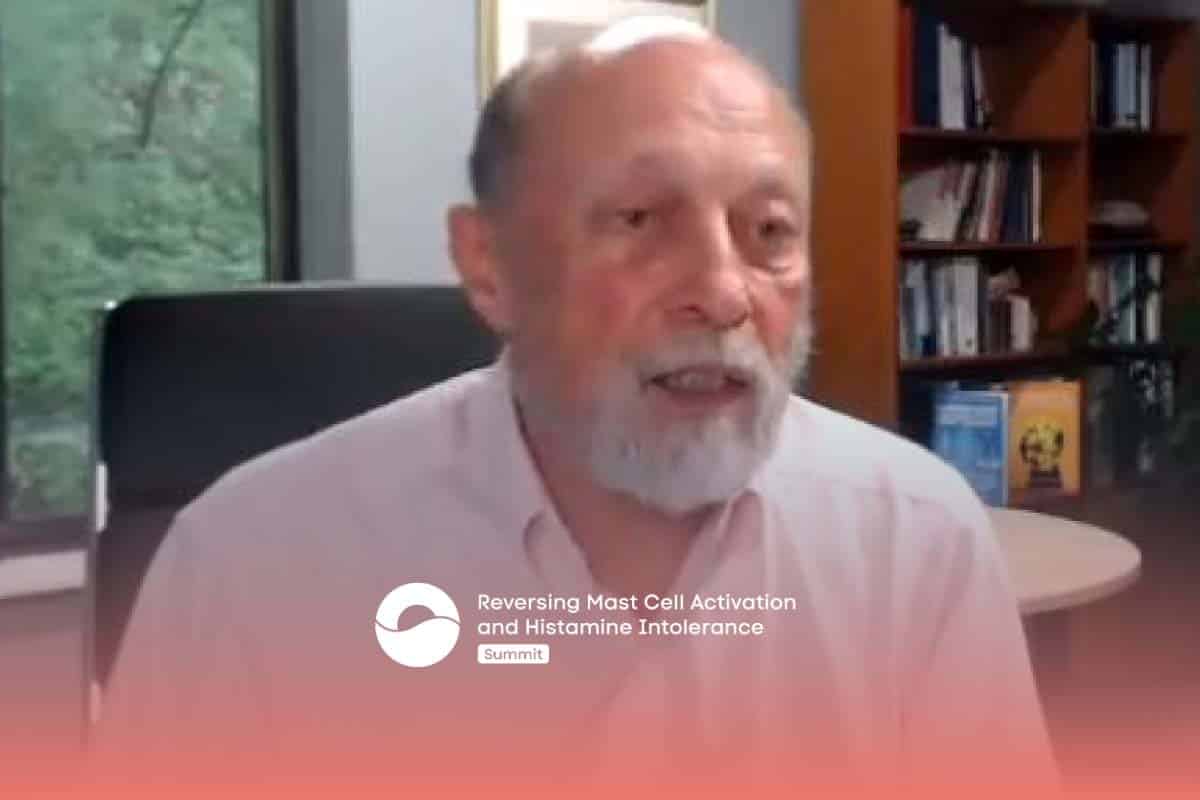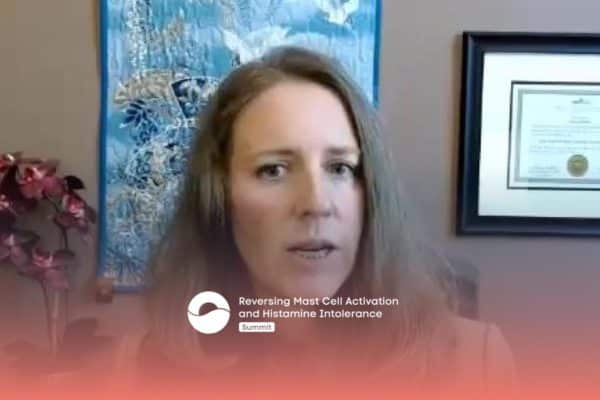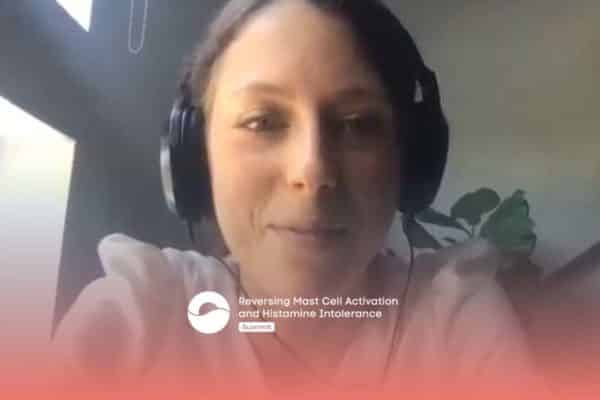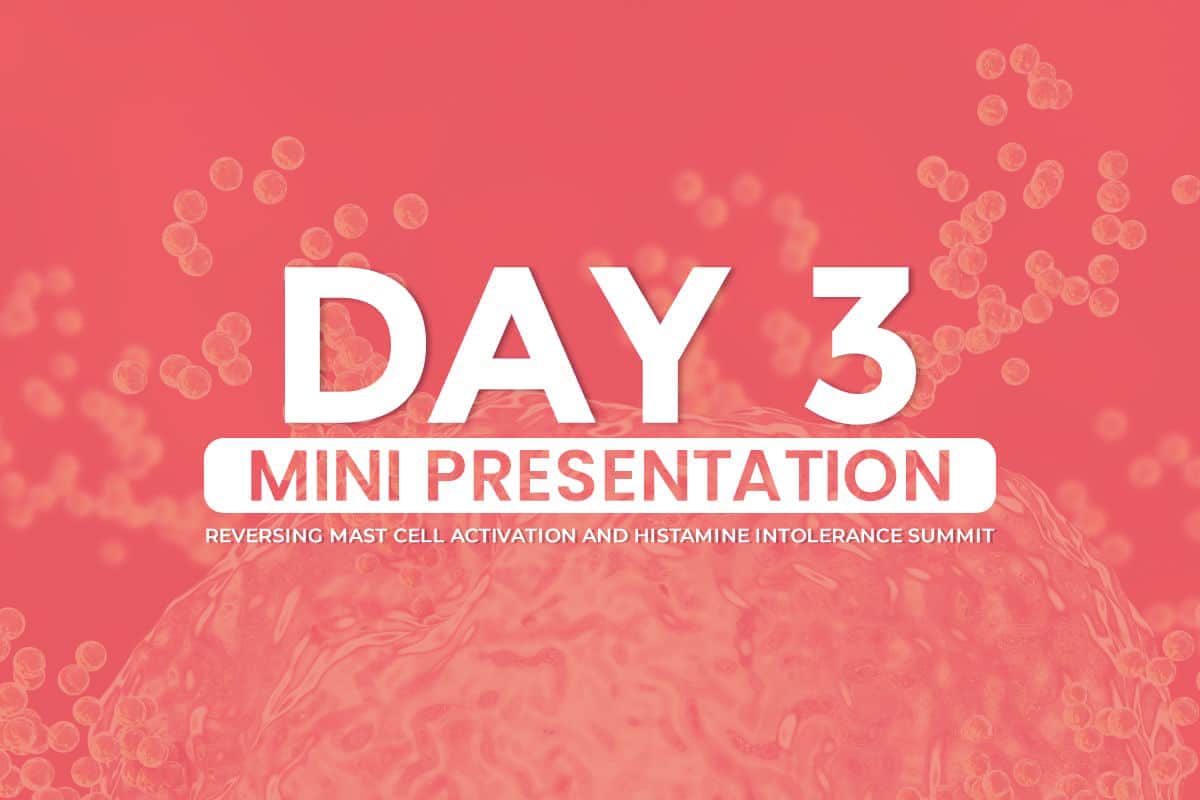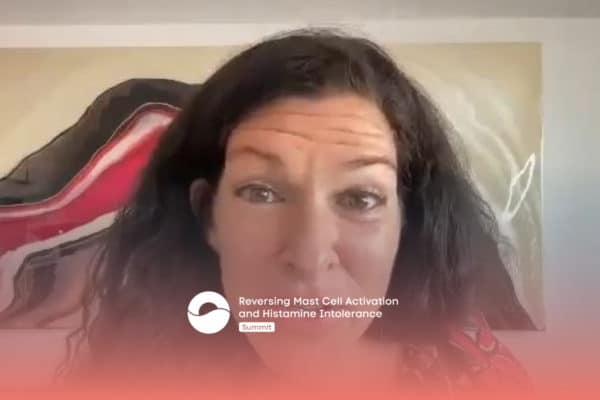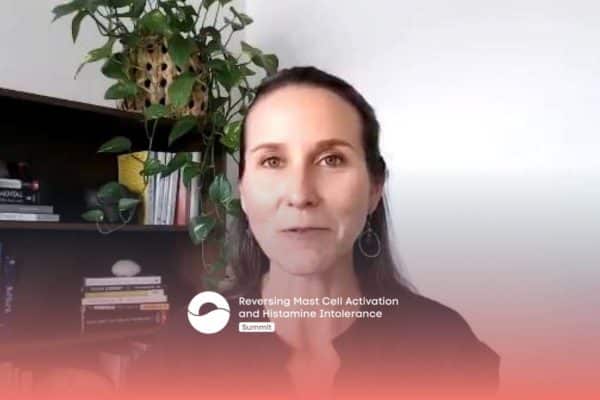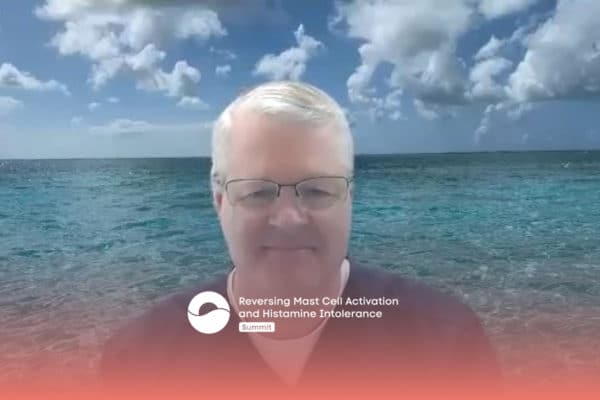Join the discussion below

Beth O’Hara is a Functional Naturopath, specializing in complex, chronic cases of Mast Cell Activation Syndrome, Histamine Intolerance, and Mold Toxicity. She is the founder and owner of Mast Cell 360, a Functional Naturopathy Practice designed to look at all factors surrounding health conditions – genetic, epigenetic, biochemical, physiological, environmental,... Read More
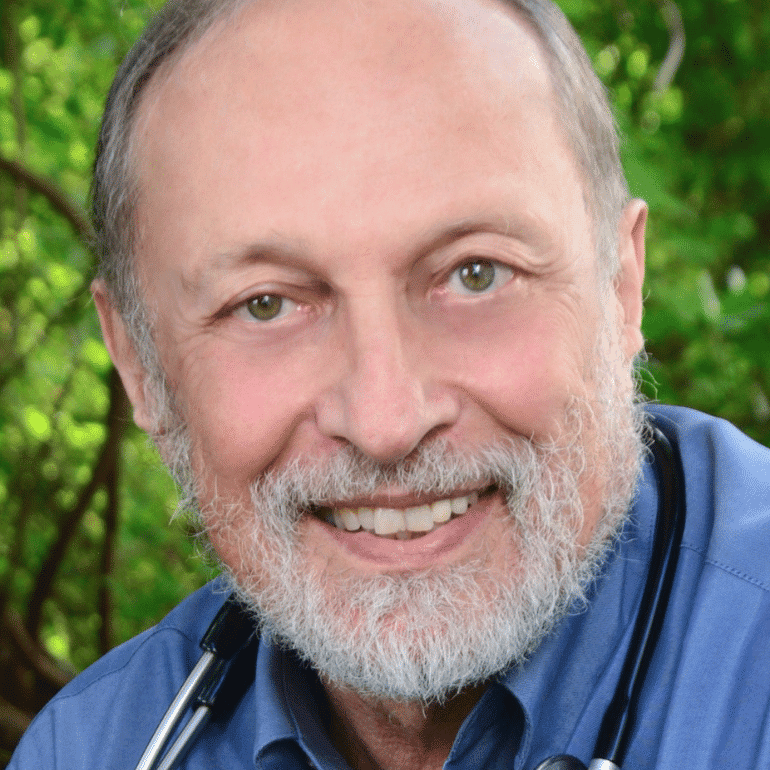
William Pawluk, MD, MSc, author of “Supercharge Your Health with PEMF therapy”, was recently a holistic doctor near Baltimore, MD. Previous academic positions at Johns Hopkins and University of Maryland. Training: acupuncture, homeopathy, hypnosis, energy medicine, nutrition and bodywork. Considered the foremost authority on the practical use of Pulsed Electromagnetic... Read More
- How PEMF therapy works
- Specific applications of PEMF in MCAS
- Long Hauler Syndrome and PEMF
Related Topics
Acupuncture, Brain, Healing, Magnetic Therapy, Magnets, Mast Cell Activation, Mcas, Pain Relief, PEMFBeth O’Hara, FN
Welcome back to this episode of the Reversing Mast Cell Activation Syndrome and Histamine Intolerance Summit. I’m your host Beth O’Hara with Mast Cell 360. I’m really excited to have Dr. William Pawluk with us today. He’s a holistic doctor. He’s based near Baltimore, Maryland. He has extensive training in acupuncture, homeopathy, hypnosis, energy medicine, nutrition, and body work, and he is the foremost authority on the practical use of what’s called PEMF, pulsed electromagnetic field therapy. And what’s gonna be exciting about this is this brings a new angle to dealing with chronic conditions, to dealing with pain, and a number of other types of things that might be fascinating to hear how PEMF can help. So we’re gonna dive into this specifically with mast cell activation syndrome. Dr. Pawluk also has two books: Power Tools for Health, and Supercharge Your Health with PEMF Therapy. Welcome, I’m so happy to have you with us!
William Pawluk, MD, MSc
Thank you, Beth, it’s a pleasure to be with you and to share with your audience and viewers.
Beth O’Hara, FN
And everybody gets into these types of things for one reason or another. What got you interested in PEMF?
William Pawluk, MD, MSc
So back in the 80s, I was a family physician, and I was working with a big group, a big medical group, and we shared hospital patients. So in the span of about a week or two weeks, we ended up having two patients admitted to the hospital with gastric bleeding. They were having bleeding. You have to figure out why they have bleeding, and we found out they were bleeding from their stomachs. And what they had in common, one almost died. So the commonality for both of those people was ibuprofen. So they were using ibuprofen heavily on a daily basis to deal with their pain. So after taking care of them and fortunately getting them out of the hospital, then the question becomes, what do I do now for their pain? So back in the 80s, there weren’t a lot of solutions for pain. It was the nonsteroidal anti-inflammatories, including aspirin and ibuprofen, or opiates. In the 80s, opiates were anathema. I mean, you don’t prescribe opiates unless you’re absolutely desperate.
Then the world changed. In the next 10 to 20 years, they say, opiates are fine. Here, give ’em as candy. Give ’em all the opiates they want, it’s okay. Well, now we know of course that that’s not the case. So back then, at least, I said, this is stupid medicine. It’s doing the same thing. It’s insanity, doing the same thing over and over again expecting never to have a complication, right, a twist on that old saying. So I said, I gotta do something different. I have to find a different way to help people with their pain problems that doesn’t rely on the traditional things that we were using, procedures, opiates, and ibuprofen. So I said, I think I’m gonna study acupuncture. So I looked around the landscape and said, okay, I’m gonna hone in on acupuncture. So I’m gonna leave the house of medicine. I’m gonna stray from the flock and go and learn acupuncture.
Beth O’Hara, FN
Especially then, that’s gonna get you in trouble.
William Pawluk, MD, MSc
Well, yeah, it could, but unfortunately, I was obstinate and maybe stupid, they would say. But yeah, so I learned acupuncture, and then when I finished the acupuncture training, I came back into the world prepared with all my new tools, and now I’m gonna do acupuncture. Lo and behold, people said, “No way, I’m not gonna have needles put in my body, “not on purpose, not voluntarily!” So I was getting so much resistance, I said, okay, fine, what’s another way to do acupuncture without using needles? Well, now we know about palpation so you can rub points. You can use ice and cold. You can use heat. You can use, now we know, lasers. You can use color therapies. There’s all kinds of ways besides needles. But I also discovered that in the Orient, they were using magnets. They were taking these small little powerful magnets and putting them on acupuncture points, and do you get a similar benefit to the acupuncture system by doing that. So I started doing that, working with magnets, and yes, they work, but along the way, I discovered that when I put magnets on different parts of the body, strange things happened. Lesions went away. You don’t have that happening with acupuncture.
Beth O’Hara, FN
Wow, that’s interesting.
William Pawluk, MD, MSc
Swelling improved. I got a spider bite myself one time. I didn’t even know I got bit, actually. I looked down, and my skin was itchy, my leg was itchy, and there was this quarter-sized lesion, big red welt, and it had that center point that you know you got bit. And usually, that’s gonna swell right away, and it’s gonna take a couple weeks for it to go away. Well, I put this big, thick magnet on it, just taped it on my skin. Literally, within three hours, gone.
Beth O’Hara, FN
Wow!
William Pawluk, MD, MSc
Gone, disappeared. In my experience as a family doctor, I’d seen so many spider bites over the years, I knew normally, it would take a week to two weeks for it to get better. So I’m like, what is going on here? So I started studying magnets. I used them more extensively, got all kinds of magnetic systems and so on, and I finally met a doctor from the Czech Republic, and I didn’t have access to the science, to the medical literature about magnetics, because most of it was hidden behind the Iron Curtain. It was in Russian or Cyrillic, so I didn’t have access to that information. I knew there was information out there, but I didn’t have access to it. But this doctor that I met from the Czech Republic got his PhD in magnetic field therapy, and he had to translate, for his thesis, he had to translate a lot of that science. So he had a manuscript. Now, it was written in what I call “Czech-English.” It wasn’t English-English; it was Czech-English. And not only that; it was Czech technical English. So he gave me the manuscript, I worked on it, redid the manuscript, and I produced my first book called Magnetic Field Therapy in Eastern Europe: a Review of 30 Years of Research. And that was around 2000 that I produced that book.
I finally started getting, here’s the science. I said, wow, this is amazing stuff, and it was impressive. It was impressive science, and it was impressive results, a very, I thought, very safe and simple technology. So I started getting devices from Europe and started working with those devices, and that is the journey so far. So as I grew with that, grew with that experience, I developed my first website, drpawluk.com, and that was more informational. We didn’t promote devices or products, but everybody kept asking me, what devices should I use? What should I use, how do I use it? So then we started arranging for devices to be obtained, obtainable through us, and then we provided people with the training for that, so we eventually evolved a store. Now, we didn’t make the devices. We got them primarily from Europe. Then after that, after having a website for as long as I did and seeing the tremendous benefits, the results from magnetic field therapy, I wrote my first book called Power Tools for Health, and that had the science.
I had accumulated all this science over those years, and it was hard to find. That science is hard to find. There is an organization called BEMS. It’s Bioelectric Magnetic Society, but it’s all basically scientists that are writing on there. This is not a layperson’s library. So I had to gather information from all sorts of sources and put them into the book. We have over 500 references now to say, here’s the science. It’s not woo-woo. It’s physics. It’s physical therapy, in its own way. It does all kinds of things. So this is not woo-woo at all, and it’s pretty well known in Europe. So we’re still at the very early stages of growing this technology and growing this science. More and more doctors are beginning to accept it. Conventional doctors are beginning to accept this technology. So that’s the history leading to now.
Beth O’Hara, FN
And so, it was a really interesting history. My experience with PEMF is being at a conference, and some of our community members know that I’ve had some really severe ligament damage in my neck and my shoulder and various places. I was in so much pain. I had traveled on my own, I pulled my suitcases, and my neck was just intense pain. I was having trouble concentrating, and I could not get the pain to go down. And somebody said, let’s use some PEMF on your neck, and we used it locally on my neck. And within 10 minutes, this searing, excruciating, red-hot pain was gone, and it was the first time I’d had that kind of relief. I don’t get that relief with painkillers. I’ll get some relief with topicals, but it was so interesting to me. And I know really excited to learn more from you today about PEMF and how we can use it, and also, how do we hone in on it when we have mast cell activation syndrome, because I did do a whole mat, and I was looking at getting a unit, but with that whole mat, I got inflamed, and I know you’re gonna talk about, and we’ve talked about before, why that happened and how that more local application worked really well. We should probably start with for people who are brand new to this, what is PEMF, and let’s also talk about, we have so much people that have EMF sensitivity, how those are different.
William Pawluk, MD, MSc
Worlds apart, literally worlds apart. Even though EMF is in both of them, EMF stands for electromagnetic fields. We have associated EMFs with environmental magnetic fields.
Beth O’Hara, FN
Like wifi routers.
William Pawluk, MD, MSc
Primarily wifi routers, cell phones, cell towers, and so on. So that’s what most people think of EMFs. Now, the major difference between the two is that EMFs are broadcast into the environment, and they have a wavelength. So those electromagnetic fields are broadcast, and that’s, technically speaking, we call open loop. It’s an open loop. Now PEMFs are generated by currents flowing through a wire so there’s something called the right hand rule. So if a current is flowing through this wire, let’s say my thumb is a wire, and this current flowing through it, and that current is oscillating, just like our power lines are oscillating. And with every pulse and every oscillation, a magnetic field is produced that’s perpendicular to the flow of the field. So basically the magnetic field is going like this. So it opens and collapses, opens and collapses with each pulse.
That’s called a closed loop, ’cause it’s coming back down to its source. Now, the size of that magnetic field emanating from that wire depends on the intensity of the current following through the wire. But it’s always a closed loop. The good thing about magnetic fields, whether it’s open loop or closed loop, is as it goes out, it will pass through almost everything. The only thing it doesn’t pass through typically would be metal, but what it does with metal is it bends around it. It may not go through it, but it bends around it. So it doesn’t matter whether it’s bone or skin or brain or fat or muscle; it doesn’t matter. It goes through that as if it was not even there. So the magnetic field doesn’t care about the body. It doesn’t even know a body’s there! There’s no resistance to it. It doesn’t get used up.
So the closed loops system now, which is what we call PEMFs, are designed for our healing purposes primarily. Wifi, cell phones, are designed for communication purposes. They have a different purpose, so they’re designed for that purpose, even though they may have physical consequences. So the difference then between a wifi signal and a PEMF signal is that a wifi signal wavelength is extremely short, which means it gets absorbed by the body. It can go through the body to some extent, but basically, it gets absorbed. And that’s the principle behind microwave ovens. You put that in there, you blast it with these microwaves, and it heats. So when we are bombarding our bodies with microwaves, we heat.
Beth O’Hara, FN
And those are short waves.
William Pawluk, MD, MSc
Because they’re extremely short waves, and they get absorbed. They don’t go all the way through; they get absorbed. so if you hold a cell phone to your ear, you take the cell phone away, you can see the ear’s red. What you’ve been doing basically is cooking your ear, and you’re also cooking the brain underneath, to some extent, because it’s absorbed. If you look at the opposite ear, the opposite ear may be a little redder as well, but not anywhere as intense as the side that you had the cell phone. So the longer you hold the cell phone there, the more cooking goes on. So that’s the reason that it’s bad for you. It’s because it’s absorbed and therefore creates heating which then creates cellular damage, which then creates DNA damage and so on. PEMFs don’t do that. They’re passive, and they go completely through the body. They don’t stay in the body at all. So as long as it’s less than about 100 megahertz, it’s passing completely through.
Beth O’Hara, FN
When I think too about how the earth has magnetic fields, and we talk a lot in our community about the importance of regulating the nervous system through grounding and putting your feet on the ground and connecting with that magnetic field, is there a relationship with that and PEMF?
William Pawluk, MD, MSc
Not really, because the earth’s magnetic field is a static magnetic field. It’s like a bar magnet; it’s just there. Now, there’s a little bit of variation to it, primarily because of the polar regions and so on, the radiation coming in from the universe, if you will, the solar system and the galaxy, but essentially, it’s a static field. So when you ground, grounding is in many ways the same as having a copper bracelet. So the copper is not active. It’s not electrical; it’s not doing anything, but the copper ions are interacting with the electrolytes and the minerals in the skin. So when you put a copper bracelet on your skin, it’s not allowing the skin underneath it to breathe adequately. It’s still breathing, but not adequately, and so what you do is you get fluid buildup. That fluid buildup is full of electrolytes, and the electrolytes from the body are interacting with the ions from the copper, which then creates a dielectric. It’s called a dielectric, a current. There’s six acupuncture meridians that go through the wrist, so that current then is going up the body.
So when you’re walking on the ground, you’re walking on minerals in the soil, which are interacting with the electrolytes in your skin, which then causes voltage production in the body, minimal, it’s minimal, but there’s some voltage production in the body, and that’s the principle behind how earthing and grounding work. Now, earthing and grounding are extremely weak. The current flowing through as a result of the copper bracelet is extremely weak. So because it’s extremely weak, it’s not that active in the body. It may help you a little bit with pain. Acupuncture helps with pain as well, but it’s not powerful, and it doesn’t do cellular repair and healing. So you can increase the variation of the intensity of the magnetic field with magnetic therapy. You have control over that, depending on the device that you got. So that’s gonna produce typically a much stronger electrolytic charge-based action in the body than grounding ever will. So grounding is nice to have. It’s good to be out there in the soil, right? It’s good to connect with nature for other reasons. But it’s not gonna be as powerful a healing agent. And the same thing often happens with healers, qigong masters, and other laying on hands healers.
What are they healing? The biggest things that they’re doing is they’re projecting their own electromagnetic fields into the body, and our bodies have something called magnetite. All the tissues of the body have magnetite. Birds have magnetite. Birds can navigate at night and in clouds because the magnetite then aligns them with the earth’s magnetic fields. So we have magnetite too. So if you interact with that magnetite with an electric field or another magnetic field, then you cause changes in the body that are produced through that magnetite interaction. So the earth’s magnetic field is interacting with your magnetite. Humans have actually been found to be able to orient relative to the field lines of the earth as well. So if you blank out their vision, you blank out their sound and hearing, and you blank out the environment, and then you spin ’em on a chair and ask them what direction they’re facing, 85% of the time, they’ll tell you the direction correctly.
Beth O’Hara, FN
That’s fascinating.
William Pawluk, MD, MSc
Because our magnetite is causing that orientation. So the magnetite again relates to grounding and earthing.
Beth O’Hara, FN
That’s fascinating. Well, I think what would help people in terms of transitioning into how PEMF helps is to know that our bodies actually function on electromagnetic energy naturally. This is happening on the cellular level. But a lot of times, people think about biochemistry. They’re not thinking about biophysics. Can you give people just an introduction to that that’ll help them understand how PEMF works?
William Pawluk, MD, MSc
I’m glad you asked that question, ’cause I’ve described it in terms of layering. The first layer is tissue. That’s what we’re used to. We just see it as tissue. But what makes tissue? Molecules, and what are molecules? Chemistry. And what controls chemistry? Physics, the laws of the universe control the chemistry. So physics can be used then to control chemistry, and then subsequently, it controls the tissue, if you can get a big enough action going. And what controls physics? Quantum physics, and what controls quantum physics? Let’s say spirit, whatever spirit is. So physics then, magnetic field therapy is physics. When you put a magnetic field through a medium or some kind, whether it’s saline or whether it’s a body, then physics, the magnetic fields are affecting the electrochemistry. So the chemistry is not just chemistry. It’s electrochemistry. And every molecule, every atom has a magnetic field. There’s nothing in the body that’s not a magnetic field. So when you add up the organs, when you add up the tissues in an organ, then each organ produces its own magnetic field.
And those have been mapped extensively. The biggest magnetic fields in the body are the brain the heart. They’ve been measured, and now we have instruments that measure them, and actually we decide on treatments based on those electromagnetic measurements. So the body’s electromagnetic, regardless. It doesn’t matter whether you believe it or not. It is electromagnetic, and because of that, it follows the laws of physics. And the laws of physics says, if you have a charge or if you have electromagnetic, you have molecules interacting with each other, there’s charge, positive and negative ions, like a battery, electrolytes. So our bodies are basically one big bag of electrolyte soup, if you think of it that away. That means it’s constantly in motion. Those electrical charges are working constantly. We have, let’s say a hundred trillion cells in our body, and every cell has about 5,000 biochemical reactions per second.
Beth O’Hara, FN
Wow.
William Pawluk, MD, MSc
It’s in motion all the time. Even when we’re dead, the molecules that are left over are still in motion. So even when we’re dead, we’re not really dead, if you wanna think of it that way. So you’re absolutely correct. Our body is an electromagnetic apparatus, and when you have an electromagnetic apparatus and you have magnetic fields, they interact with each other. And one of the most important ways that they interact is through something called Faraday’s Law. Thomas Faraday discovered this law, this principle, that when you pass a magnetic fields through tissues that have charge capability, that the magnetic field will induce charge in those tissues, will create charge, will create energy in those tissues. The higher the magnetic field and the faster it rises, the more energy’s gonna be produced in the body. That’s why higher intensity magnetic fields tend to do more charge production in the body, create more beneficial actions in terms of healing. They’ll do it much better, much faster, than very low-intensity magnetic systems will.
Beth O’Hara, FN
And I think we have to talk about too, why would we even need something like PEMF in the first place, that we’re living in this world where these different conditions are developing that are affecting the electromagnetic fields, the natural fields in our bodies. I know mold toxicity has a huge impact on these types of things. The artificial EMFs that we’re being exposed to from the cell phone towers and all that are affecting us. Chemicals affect us on these kinds of levels. Things like Lyme disease affect the biophysics of the body.
William Pawluk, MD, MSc
All of these affect the cells and the cellular function and create inflammation. So these things happen because of imbalances. Cells that are in balance are constantly interacting with each other in a dance, and one cell does not tend to dominate over another cell. The body’s always constantly self-correcting. That’s called homeostasis. So when you have an overwhelming problem to the body, like dropping a brick on a toe, that’s overwhelming, and the body immediately kicks in all kinds of defense mechanisms and repair mechanisms, and it does the best it can given the circumstances. So the worse the impact is, the more damage is done by the impact, the more work the body has to do to repair it, and the longer that it takes. So we take these things for granted. 5,000 biochemical processes for second, and they’re all in a dance, and they’re all trying to repair and balance. So anything’s out of whack, the body will try to bring it back into balance. And when it can’t, it finds the best balance it can in the presence of imbalance. If you’re missing a leg, you’re gonna find the best way to balance in the presence of your imbalance.
Most of those things in our bodies are more subtle. So we have impacts on our biology today that we never had 300 years ago, we never had 100 years ago. They’re new, they’re novel, and they’re constant. We’re in constant exposure to it. The other thing that happens too with humanity these days and certainly in our culture, that we don’t move enough. And when you’re moving among the field lines of the earth, you’re constantly stimulating the repair process of the body; you’re constantly stimulating magnetic fields in the body naturally. So we don’t move enough, either. Then our foods are poisoned. The nutrients that we need to build cells are poisoned. We have the wifi poisoned.
We have attitudinal problems that are poisoning as well. So we have all these debates and arguments and schisms in our society. Well, that causes imbalances in its own way. We’re not happy and balanced in our thought processes either. All of that cascades down into the organism, ’cause your mind can absolutely create healing. You can engage your mind to create healing. Because we’re in a culture that’s also moving away from spirituality, we don’t think of spirituality as being a resource for us in terms of maintaining our balances in the body and engaging those resources for our own healing purposes. So MCAS is just one part of a spectrum of problems in the body, and MCAS, like the other things that cause MCAS, are inflammation. Inflammation is probably the root of most of this. Magnetic field therapy impacts inflammation in a big way.
Beth O’Hara, FN
And that’s why we need all these healing modalities that we didn’t need a long time ago. I think of those of us with mast cell activation syndrome, we’re the canaries in the coalmine. We’re the ones that are just presenting with the symptoms first, which is very unpleasant, but at the same time, it gets us motivated to get our healths back in balance. I’d much rather get my health in balance now than wait 20 years for it to manifest as stage four cancer.
William Pawluk, MD, MSc
Exactly.
Beth O’Hara, FN
Because all the things, and we’ve done other talks on things like cell danger response, all these different inflammatory conditions on the cellular level are just different manifestations of the same disruptions, the same dysfunction.
William Pawluk, MD, MSc
Yeah, the body has a relatively limited repertoire of damage and repair. We have all these diagnoses, and we have all these conditions, and they’re not telling us what the basic physiologic problems are. So most diseases have inflammation as a root problem. We create labels for things because we have different kinds of manifestations of the different conditions. So cancer’s a different manifestation of problems, but it’s the same kinds of problems; it’s just a different manifestation. A headache is a different manifestation of similar kinds of problems. And in my book, Power Tools for Health, I outline about 25 different actions of magnetic fields in the body, how they affect physiologic function. And what’s that doing, again, is trying to help the body to restore balance.
Beth O’Hara, FN
I’ve read some of your work, and it’s fascinating, the broad capabilities and applications of PEMF. Can we just highlight some of those and then get specifically into it for mast cell activation syndrome?
William Pawluk, MD, MSc
So inflammation is one of the keys. I started this journey actually with acupuncture. So I discovered that magnetic fields impacted acupuncture points and meridians, and I teach a course to acupuncturists as well on how to integrate acupuncture and magnetic field therapy, because acupuncture doesn’t typically heal the cell, doesn’t heal the tissue. It balances the body and the meridians and the energy flows, but doesn’t heal. So combining the two creates much more effective action. So acupuncture’s a key. Any time you’re doing magnetic field therapy on the body, you’re doing acu. If you’re doing whole-body magnetic therapy, you’re doing whole-body acupuncture. So you’re always getting that benefit of the acupuncture. Circulation is a big one, and there are many companies out there that are selling magnetic devices saying, “Circulation, it’s all about circulation!”
No, it’s not just about circulation. It is important, but it’s not just circulation. Oxygenation. So if you improve circulation, you improve oxygenation. But circulation doesn’t take care of inflammation. It takes care of the edema that inflammation can cause. So if you improve the circulation in the tissues, then you decrease the swelling of the tissue, which inhibits healing as well. So reduction of swelling becomes an important part of this. Stimulating stem cells, stem cells cause repair. That what we need to be able to repair our tissues. So magnetic field therapy stimulates stem cells. It causes increased repair in the body. Repair is enhanced dramatically, so a wound can be healed in about half the time that it would normally take, because it’s accelerating stem cells. It’s accelerating the charge and the energy. ATP production, magnetic field therapy increases ATP production by between 100 to 400%, 600%. Just that alone. So I warn people that one of the biggest problems with magnetic field therapy is if you get an urge to put on a cape. And it’s okay to put on the cape, but just don’t try to jump over anything tall. So the energy is increased, and again, there’s so many different actions. That’s all outlined in both the Supercharge book and also in the Power Tools book. But all those actions are the body’s actions. The magnetic field is like the wind blowing through the trees: you can’t see it. You might feel it, but you can’t see it, and you only know it’s there because the leaves are moving. So you will know that a magnetic field’s going through your body ’cause you feel some of those actions, like improved circulation.
One of the key benefits of PEMF therapy, the body itself, without doing anything else, is pain reduction. That’s probably what you experienced. That happens almost immediately. What happens, though, is that you can have pain reduction, but then after a certain amount of time after your treat, the pain comes back, why? Because you haven’t healed the cause. The beauty of magnetic field therapy is it gives you that edge to help to heal, to decrease the pain. While you continue the magnetic field therapy, then you’re helping the tissues to heal themselves. And then the pain doesn’t come back. Once you’ve done the healing, it doesn’t come back. So for MCAS, probably the most important things for MCAS about magnetic field therapy is the reduction of inflammation, and the second thing is the healing of the tissue. All the damage that the inflammation is causing, or whatever caused the inflammation in the first place, that has to be healed as well. But it can be a very slow process.
Once you have MCAS, you’re, I think, really way down the road in terms of the snowball building. Then it becomes harder and harder and harder to reverse it. So the sooner people can start, unfortunately, MCAS is not a diagnosis people get until they’re way down the road, typically. So that means that whatever magnetic field therapy you do has to be done very gradually, very low intensity. Be respectful to the body, listen to the body, and adjust as the body says you can do more. And I call that training. So you can’t get off the couch and run a marathon tomorrow. You have to train, and it’s gonna hurt. Fortunately, magnetic field therapy doesn’t cause problems; it reveals problems. So if you have a reason to a magnetic field that’s negative, that’s because you did too much too soon, and that tissue is telling you it’s too much too soon. So all you do then is back off, and you have to find a way to be able to back off and still get benefit and progress, progression.
Beth O’Hara, FN
That’s really critical, ’cause I see it over and over and over, whether we’re talking about supplements, we’re talking about bringing on exercise, we’re bringing on a vagal nerve type of modality. Often, people in our audience are, they’re really working hard to get well, and they wanna do everything to get well, and I’ve done this a million times myself, and being an overachiever, I wanna do 150%, and then I’m set back. So one of the mottoes I use is, in this method, for mast cell activation syndrome, slow will be fast, but if we try to go too fast, it’s gonna take longer in the long run, because we just keep getting set back. So what you’re saying is so critical, particularly when bringing on a modality that’s really powerful like PEMF. How would you recommend people who are quite sensitive and quite inflamed, would they start with a local area? Would they start with one or two minutes?
William Pawluk, MD, MSc
Well, again, this is a very long discussion, and in the Supercharge Your Health book, actually, in the appendix of the Supercharge Your Health book, I have a low and slow protocol. So I advise people how quickly they could advance. Some people can advance very quickly and other people take months even to go to the next level. Some people can’t even tolerate the least amount of magnetic stimulation and have to do it more indirectly. We work with people who purchase magnetic systems through drpawluk.com to be able to develop that. I do strongly recommend that if you’re considering magnetic field therapy and you have MCAS, you really oughta get the book Supercharge Your Health.
Beth O’Hara, FN
And I’ll link to that on our summit resources page at mastcell360.com/summit so people can find your book.
William Pawluk, MD, MSc
I think it’s very important. So one of the key things about magnetic field therapy, and I had to learn this the hard way as well. I’ve worked with magnetic fields for 30 years, and of course in 30 years, you can make a lot of mistakes. Fortunately, with magnetic field therapy, it’s not a mistake that hurts. It can hurt, but it’s not gonna harm you. You can feel like it’s harming you.
Beth O’Hara, FN
It’s uncomfortable.
William Pawluk, MD, MSc
You may feel discomfort. So what I found is that the least amount of stimulation you give to your body, the better. So if you’re listening to heavy metal music, I don’t know how much people with MCAS like to listen to heavy metal, probably not. Soothing music, low-paced, slow music is more likely to be sort of acceptable to your body and tolerable, and magnetic field therapy can be the same thing. So devices that provide you a lot of frequencies, and there are lots of companies that are selling these devices because that’s all they sell, they’re gonna convince you that their device is gonna solve all your problems. So intensity matters. Intensity of the magnetic field matters to get deeper healing, but then you do need to control the amount of stimulation that you give the body. So what I’ve learned the painful way over the years is that devices that give you a single frequency at a time, that you could select that frequency, the devices that give you a single frequency at a time are the least aggravating. Intensity still matters, because once you start to stimulate tissues, once you start to increase circulation in the tissues, then circulation increases inflammation. So the more inflammation you have, then the slower you’re gonna have to go, typically, unless you have high levels of tolerance.
But the faster you go in helping the inflammation, the faster you’ll heal. So it’s a matter of tolerance, ’cause again, magnetic therapy can’t fundamentally hurt you. You might not feel comfortable, but it can’t hurt you. So go low and slow, use a single-frequency machine that basically, it’s a pulse machine. You’ll read on the internet, there’s a lot of people that say high-intensity magnetic fields are dangerous and they’ll hurt you, but again, a good part of that thinking comes from the fact that that’s all they’re selling, is that machine. They don’t necessarily know much about the science, and most of them have never read my book Supercharge Your Health. But then once you know how to control it, then you will gain better. You’ll go better and deeper. You’ll be able to heal deeper into your body with a higher-intensity magnetic field, because magnetic fields drop off very rapidly, based on a law of physics called the inverse-square law. So like with light and sound and heat, the further you move away from the source, the faster that energy drops off. Magnetic fields are the same way. So you control the intensity, you control the dose, and you control the treatment time, and then find the way that works best for you. Eventually as you heal the tissues, you’ll be able to do more and more and more and more, and again, hold what you’ve done as well better.
Beth O’Hara, FN
So there’s different types of frequencies that you’re gonna use depending on what area you wanna treat. So if I’m going after the ligaments that are right here under the surface of the skin and muscles of my neck, I don’t need to go as deep as if I’m working with my organs.
William Pawluk, MD, MSc
Your heart or liver or kidneys.
Beth O’Hara, FN
Yeah, and that’s one of the things I really appreciate about your work, is that you’re not about, well, there’s one size that fits all, which never works in this community. It’s about finding the right fit for the right person, and your organization does a lot of support for people with that. I know you have even a comparison chart where you’ve narrowed down for people the type of PEMF devices that are usually the best tolerated for people with mast cell activation syndrome, so they have some choices in there.
William Pawluk, MD, MSc
Correct, correct. And again, you have to be able to control the intensity. You have to control the frequencies. So you don’t want too many frequencies. And if you just choose the intensity, most of the time, these single-intensity devices, you don’t worry about the pulse rate. You just don’t have to worry about that, ’cause what you’re aiming for is to heal the tissue. So then you want a local device. So for your head, for your brain, you’re right. For treating the neck, it’s very close to the brain, and anything that’s close to the brain is going to influence the way the brain works. And the brain has its oscillations. It has its own frequencies. So there’s different frequencies for being alert and listening and learning like you are, hopefully you’re not sleeping.
Beth O’Hara, FN
Those alpha waves.
William Pawluk, MD, MSc
Well, beta, actually.
Beth O’Hara, FN
And beta waves, yeah.
William Pawluk, MD, MSc
Beta and gamma. So beta and gamma are the frequencies that are wide-awake frequencies and mental processing. Alpha, for example, is what I’d call basically a neutral frequency. It’s the observer frequency. You’re just looking, but you’re not thinking, you’re not processing, you’re not learning. You’re just aware. Below that, we go into the frequencies that control our levels of alertness and awareness, so theta and delta. So you can choose magnetic systems that will give you those kinds of choices. But if you’re gonna be treating the back of your head, it really doesn’t matter what frequency you use, but it does matter if you wanna be driving. You don’t wanna be in delta or theta while you’re driving. So you can actually get devices that will give you, treat that area, but at the same time, keep you alert.
Beth O’Hara, FN
So this is where your book will be so helpful for people, and then I’m gonna put the download that you’ve made for them on the summit resources page as well about the different devices that you hand-picked that are better for people with MCAS so people can find that.
William Pawluk, MD, MSc
Right, yes.
Beth O’Hara, FN
What else do we need to let people know? Any other tips and tricks for people with mast cell activation syndrome and PEMF? Anything else that just important for people to know about this?
William Pawluk, MD, MSc
Probably the most important problem that I see with PEMF therapy and that creates frustration for people is the wrong machine. And the worst way to make a decision about the equipment you should get is based on price. If you buy cheap, you get cheap. And magnetic field therapy, unfortunately, is not. The right magnetic system may cost you quite a bit. But then you don’t have to look back. And I also tell people that when you get a PEMF device, you don’t own it; the house owns it, including the dog, the cat, and the plants, and your partner, if you allow your partner to use it too. So cost is a big factor, and I want people to know that if you’re gonna get the right piece of equipment, you may have to be prepared to spend the money to get the right piece of equipment.
Beth O’Hara, FN
It’s like sauna. You can get a $500 sauna off Amazon, but those saunas have flared people. They’ve made people really sick, versus the type of sauna that we found to be really effective and helpful and low-EMF and have the best infrared frequencies for these conditions. It’s kind of similar with PEMF. You wanna make sure that you’re making a good investment.
William Pawluk, MD, MSc
And it may be that you may need more than one machine. So an entry machine could end up being something FlexPulse, ’cause it’s battery-operated, portable, and it can run for up to 12 hours at a time. It’s got a rechargeable battery. And it could help you with sleep. It’ll help with those nervous system things we talked about today, ’cause it has the single frequencies. And you find that that works for you, but not enough, particularly if you have inflammation throughout your whole lung. It’s not gonna work that well because it’s just a small coil like that. If you need a bigger coil to cover a bigger area, but you may be too sensitive, then that’s probably a good starting point, and you can always keep using it, even after you do whole-body. If you do whole-body higher intensity magnetic therapy, you have to plug it into the wall. It requires current, and the FlexPulse does not. So again, you can have two tools to work for you by having both lower intensity and higher intensity, local and whole body.
Beth O’Hara, FN
Something that’s portable, and something you could lie down while you doing your meditation, or you could sleep with it.
William Pawluk, MD, MSc
Lie down or sit, while you’re sitting at a computer terminal.
Beth O’Hara, FN
Hopefully you’re hardwired and EMF pre-shielded. And I did wanna ask you actually before we finish, we’ve had a lot of people who have joined our community with long COV!D, and they develop mast cell activation syndrome with COV!D, and they’re dealing with all the things with long COV!D, circulation issues, coagulation issues, fatigue, and so on. Are you getting case reports of people having good results with PEMF?
William Pawluk, MD, MSc
Unfortunately, we don’t see a lot of people with long COV!D. I do have a blog on drpawluk.com about long COV!D, long-haulers. I can’t call it long COV!D because the FDC has already slapped my wrist.
Beth O’Hara, FN
Okay, we’ll call it long-haulers.
William Pawluk, MD, MSc
So we call it long-haulers. So magnetic field therapy can deal with most of the problems that people have with long-hauler syndrome, but again, sensitivity becomes an important part of that. So you still have to end up titrating what you need. If you have local problems like a brain problem or a heart problem or clotting disorder, then PEMF therapy can be extraordinary helpful. But again, the key in long-hauler syndrome is decreasing inflammation and decreasing the damage from not only the infection. There’s a misconception that long problems from COV!D are caused by the infection; they’re not. They’re caused by the inflammation.
Beth O’Hara, FN
Which is what the cytokine storm is.
William Pawluk, MD, MSc
That’s what a cytokine storm is. That’s right, exactly correct. So again, with long-hauler syndrome, most of the time, the focus is going to be on improving cellular function or physiologic function and helping to decrease inflammation. And then you can use all the other things that you do for inflammation as well, and you should. Magnetic field therapy is not a sole therapy. You can’t heal a cell if it’s nutrient deficient. If it doesn’t have the right nutrients, you can’t make it heal itself, ’cause it can’t heal. It doesn’t have the tools to heal itself, the resources. So combining all the other therapies that you do, that you recommend to people, plus magnetic field therapy, the first basis is what you’re doing. The next level up that is adding that other form of stimulation and activation of everything else you’re doing and the ability to enhance repair.
Beth O’Hara, FN
And that’s gonna increase or improve our recovery times. It’s gonna shorten our recovery times. It’s gonna enhance our long-term quality.
William Pawluk, MD, MSc
And our function, our ability to function.
Beth O’Hara, FN
Wonderful. I just wanna thank you so much for your time and also for the work that you put out in the world. It’s incredible the amount of research that you have combed through, that you have published, that you have put together for people. I think of you as one of the primary people who are responsible for PEMF being accessible and there being an entry point for laypeople into this so they would understand it. So thank you so much for your work.
William Pawluk, MD, MSc
You’re very welcome. Thank you for the recognition. But, knowing about PEMF therapy is not good enough. If you don’t own it, you don’t get the benefit, right? So that would be the other thing I would encourage you to do. Know as much as you wanna know about it, but you’re going to have to eventually invest in a device.
Beth O’Hara, FN
So check out the summit resources page at mastcell360.com/summit. You will find a link to Dr. Pawluk’s book. You’ll find the comparison sheet for the PEMF devices that are best tolerated in MCAS, and his website, tell them your website, ’cause it’s a just huge wealth of resources for people.
William Pawluk, MD, MSc
A lot, a huge amount, yes. It’s Dr, D-R, Pawluk, P-A-W-L-U-K, drpawluk.com.
Downloads

